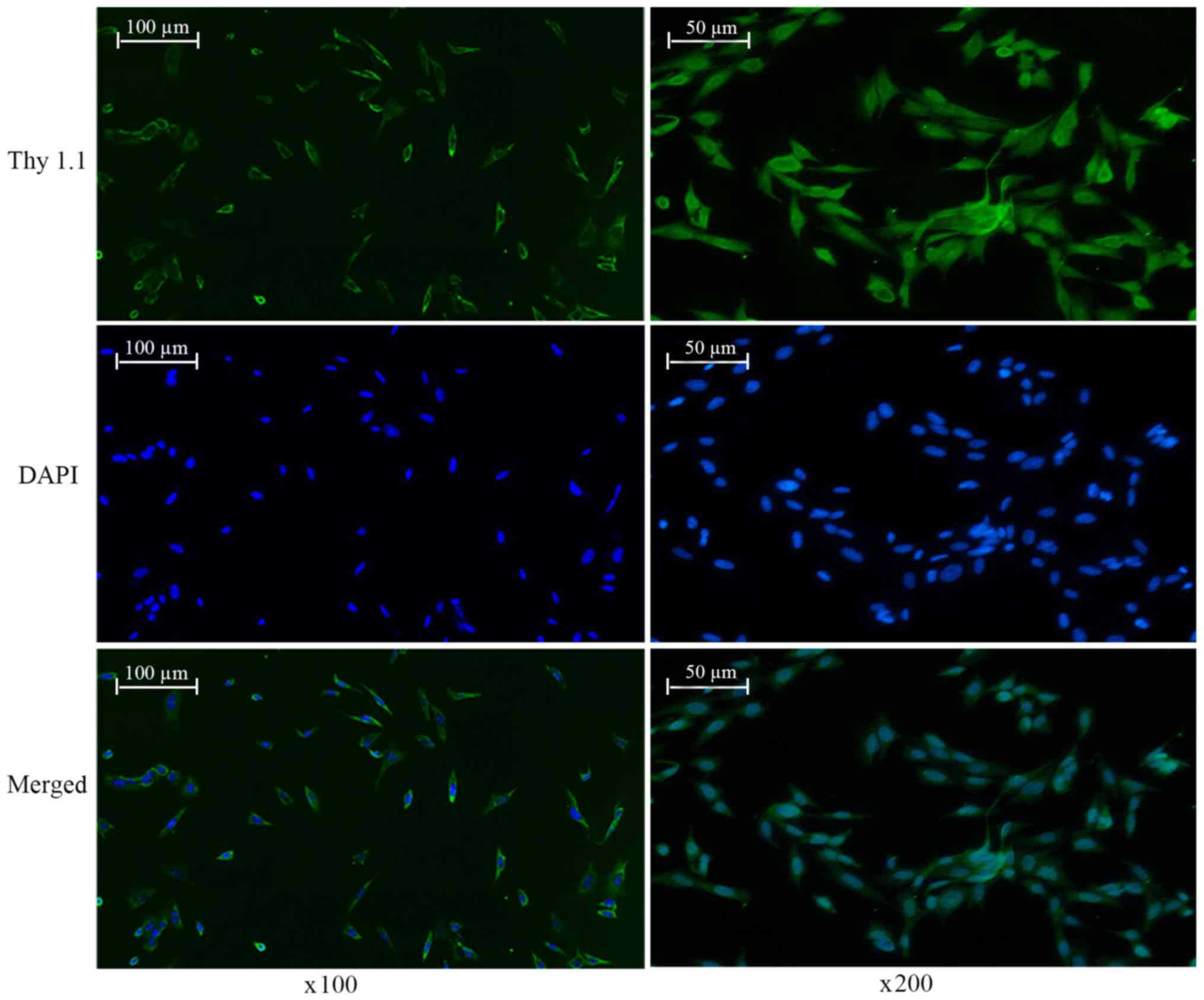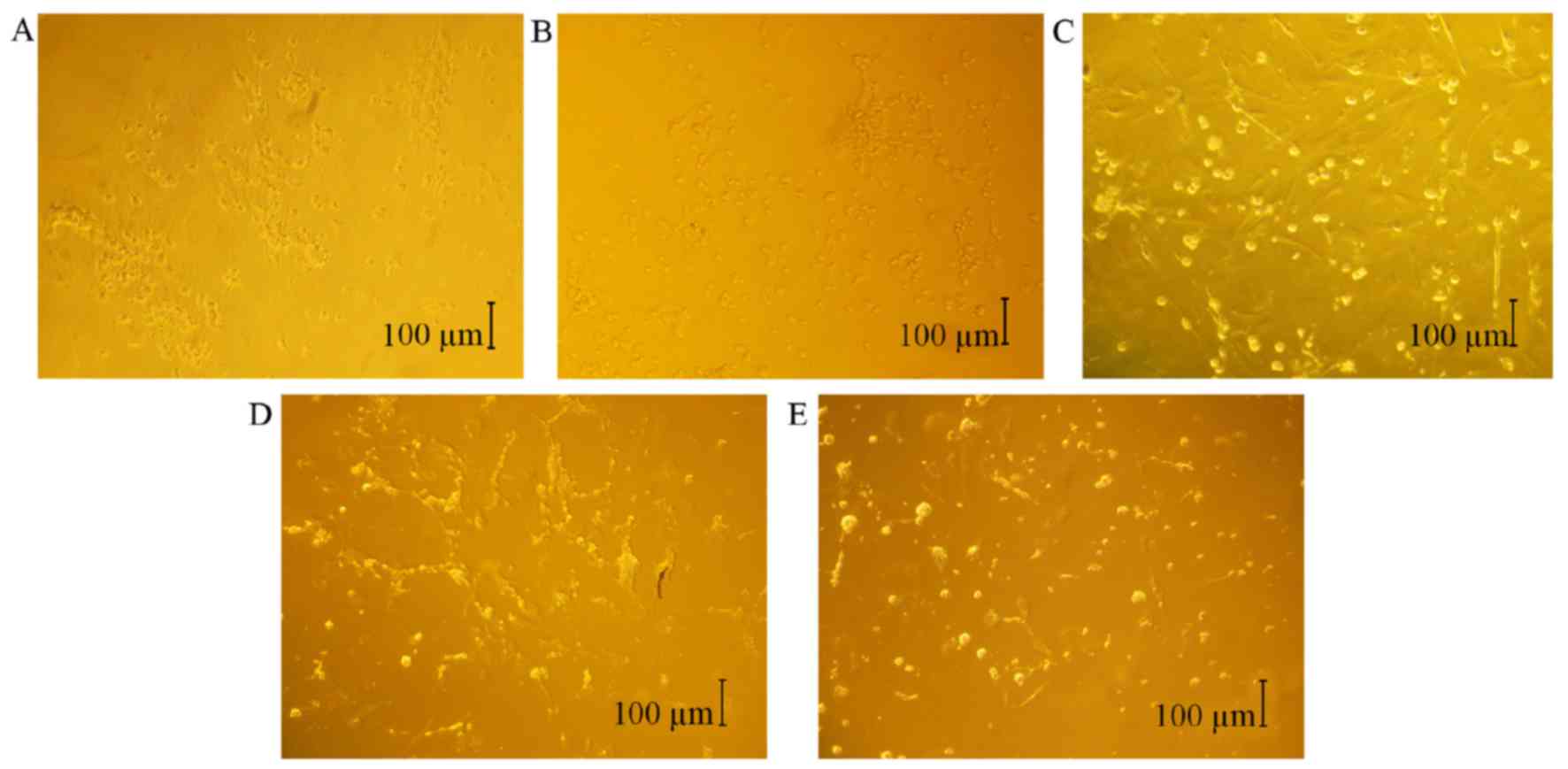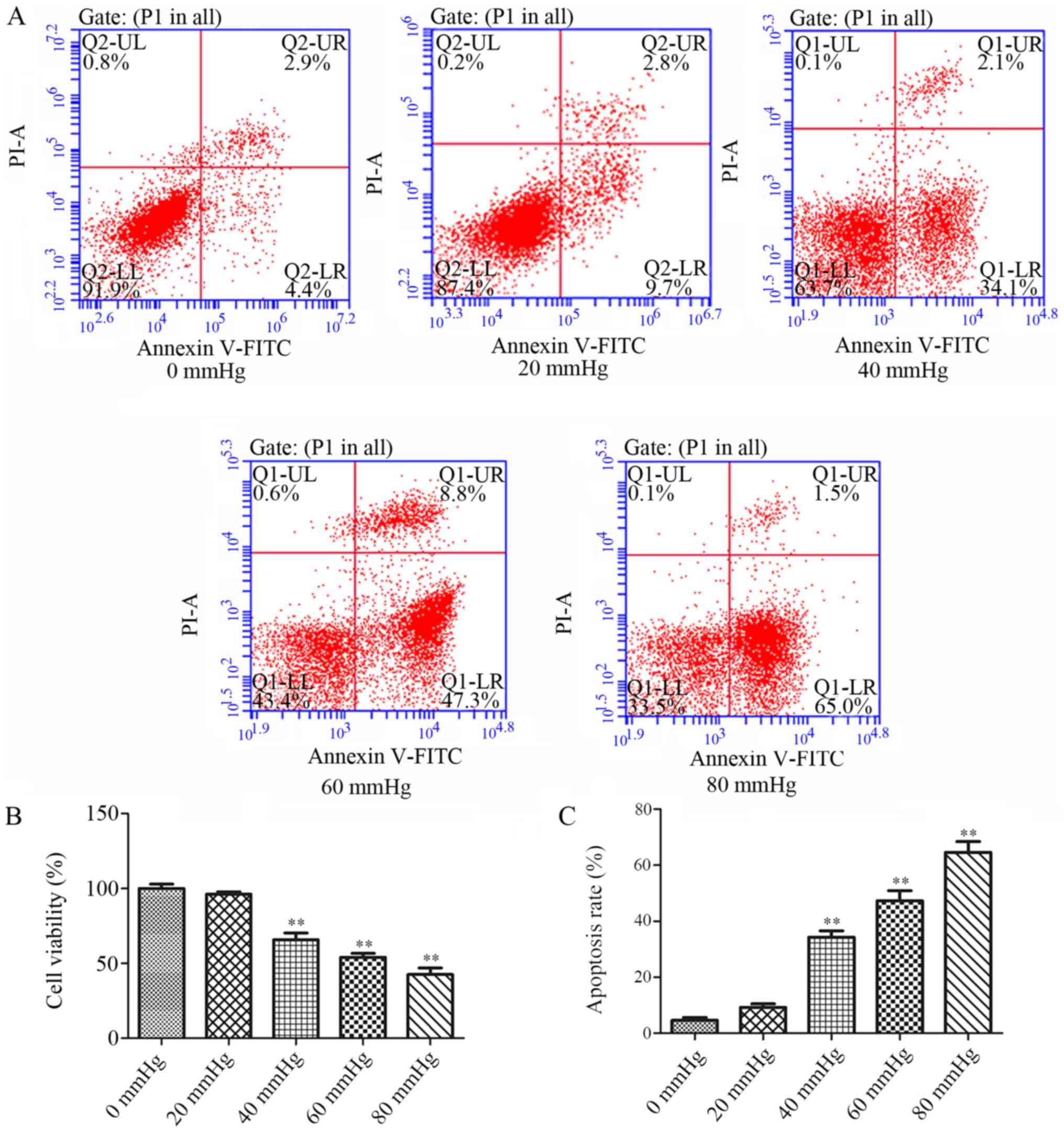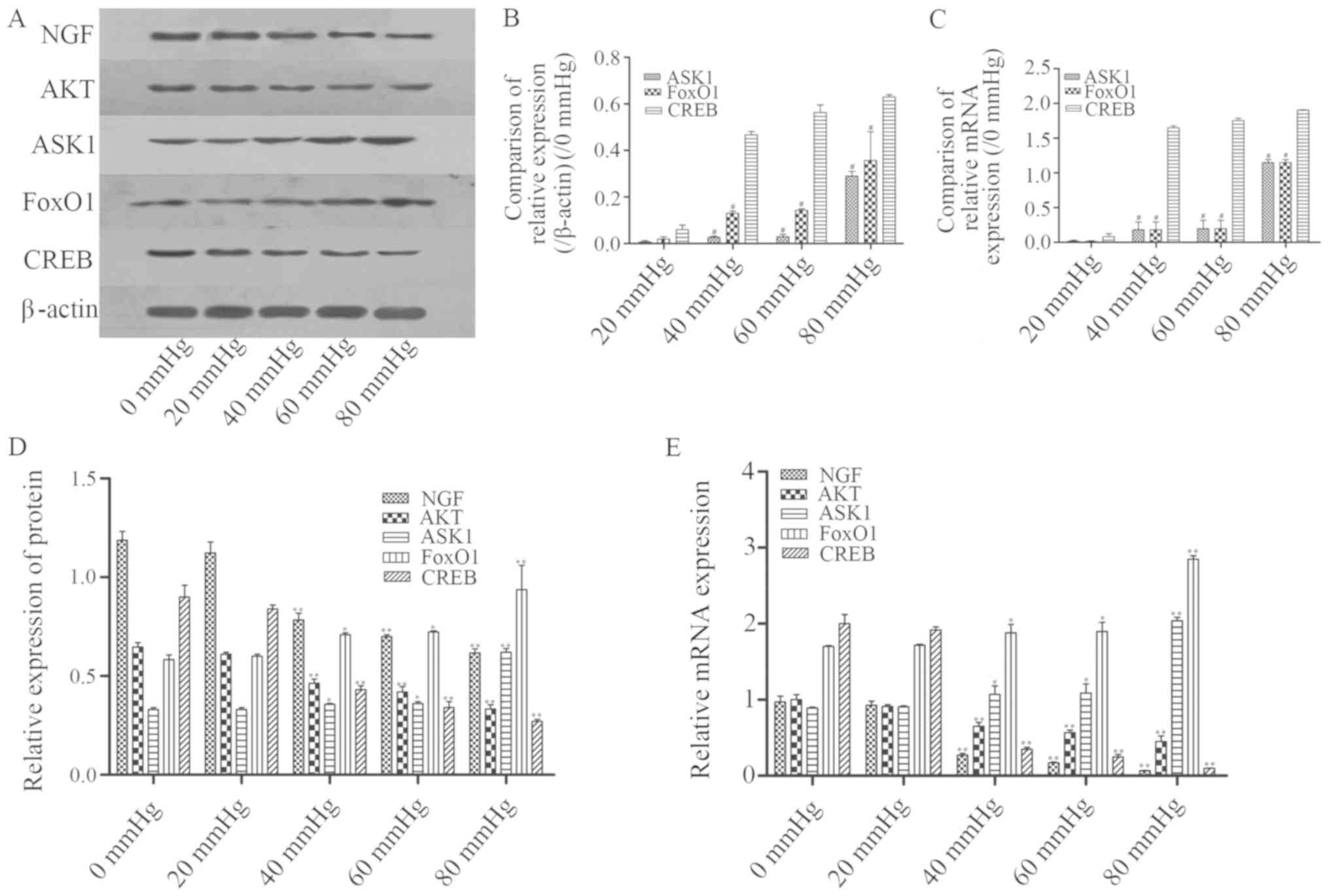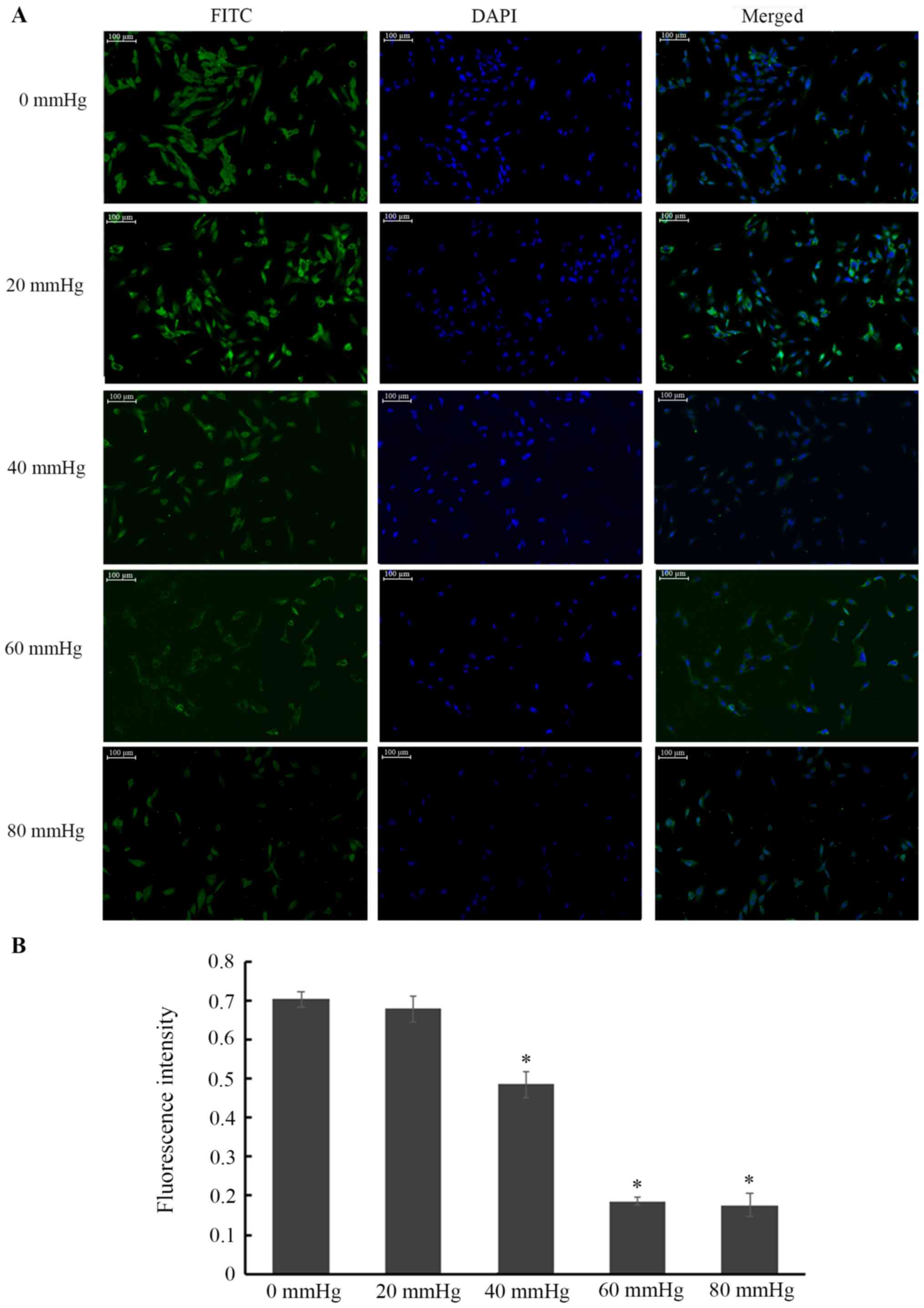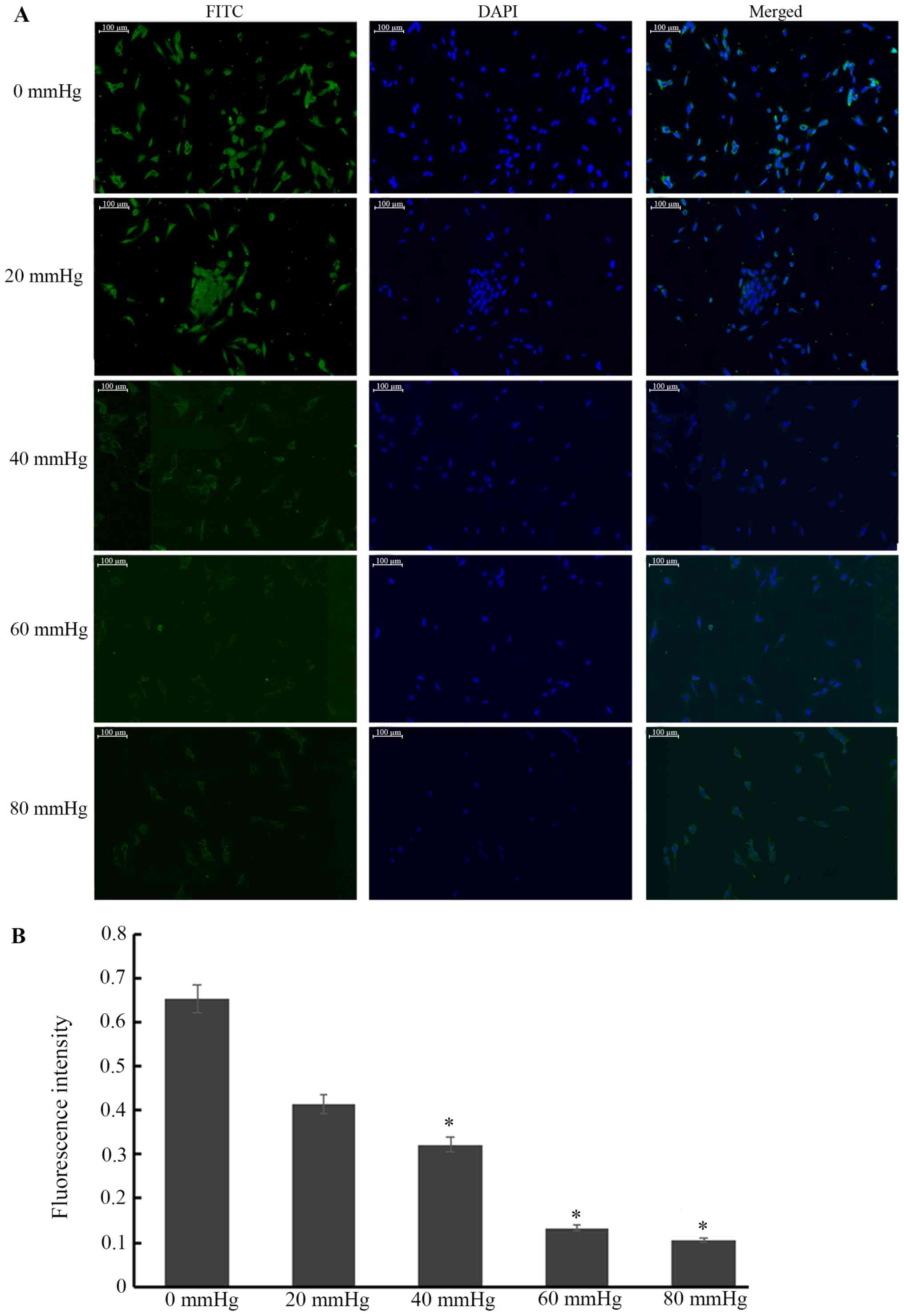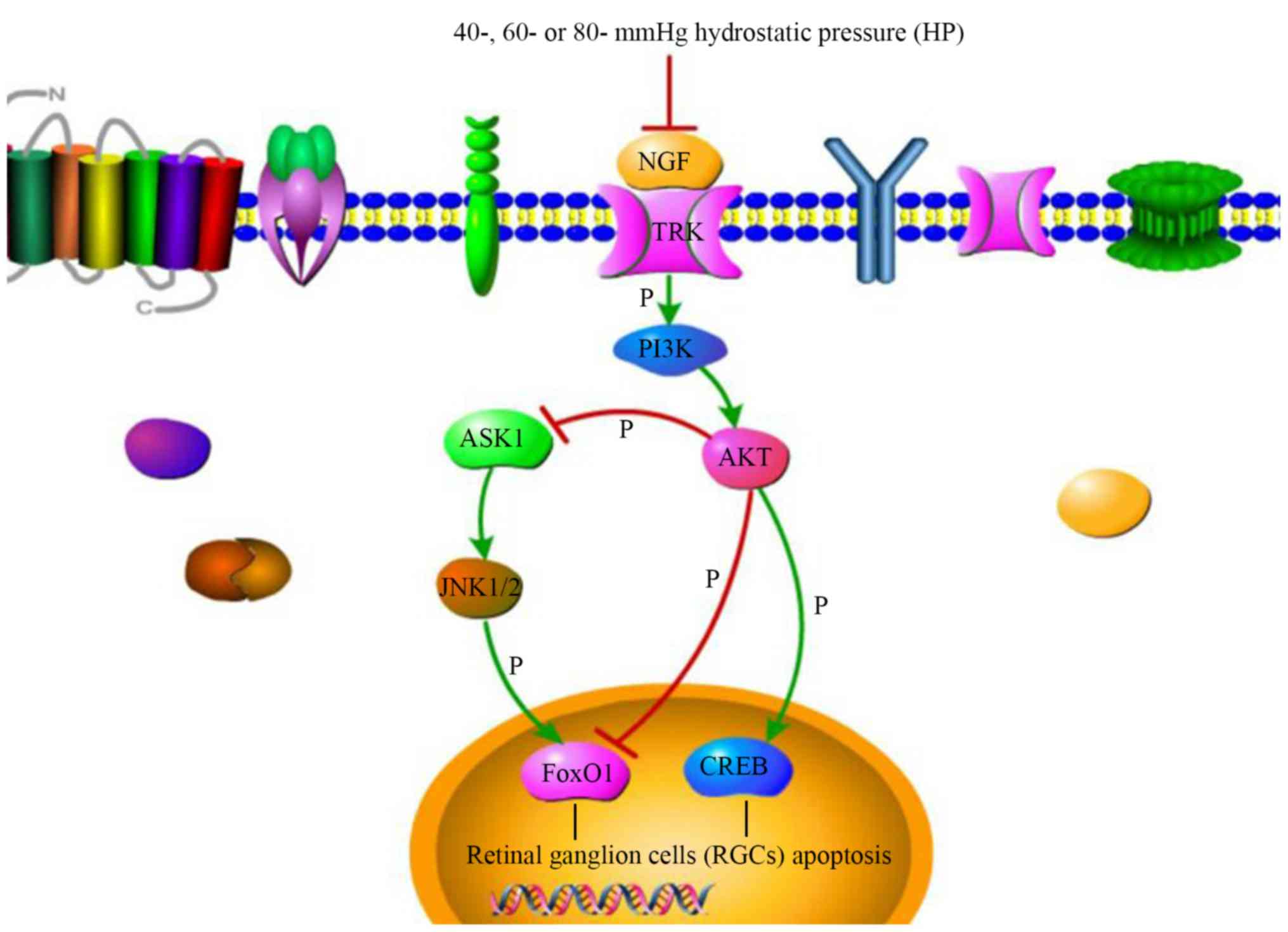|
1
|
Tham YC, Li X, Wong TY, Quigley HA, Aung T
and Cheng CY: Global prevalence of glaucoma and projections of
glaucoma burden through 2040: A systematic review and
meta-analysis. Ophthalmology. 121:2081–2090. 2014. View Article : Google Scholar : PubMed/NCBI
|
|
2
|
Zhu Y, Zhang L, Sasaki Y, Milbrandt J and
Gidday JM: Protection of mouse retinal ganglion cell axons and soma
from glaucomatous and ischemic injury by cytoplasmic overexpression
of Nmnat1. Invest Ophthalmol Vis Sci. 54:25–36. 2013. View Article : Google Scholar : PubMed/NCBI
|
|
3
|
Caprioli J: Glaucoma: A disease of early
cellular senescence. Invest Ophthalmol Vis Sci. 54:ORSF60–67. 2013.
View Article : Google Scholar : PubMed/NCBI
|
|
4
|
Cordeiro MF and Levin LA: Clinical
evidence for neuroprotection in glaucoma. Am J Ophthalmol.
152:715–716. 2011. View Article : Google Scholar : PubMed/NCBI
|
|
5
|
Yan PS, Tang S, Zhang HF, Guo YY, Zeng ZW
and Wen Q: Nerve growth factor protects against palmitic
acid-induced injury in retinal ganglion cells. Neural Regen Res.
11:1851–1856. 2016. View Article : Google Scholar : PubMed/NCBI
|
|
6
|
Socodato R, Brito R, Portugal CC, de
Oliveira NA, Calaza KC and Paes-de-Carvalho R: The nitric
oxide-cGKII system relays death and survival signals during
embryonic retinal development via AKT-induced CREB1 activation.
Cell Death Differ. 21:915–928. 2014. View Article : Google Scholar : PubMed/NCBI
|
|
7
|
Zhang X, Tang N, Hadden TJ and Rishi AK:
Akt, FoxO and regulation of apoptosis. Biochim Biophys Acta.
1813:1978–1986. 2011. View Article : Google Scholar : PubMed/NCBI
|
|
8
|
Cheng C, Jiao JT, Qian Y, Guo XY, Huang J,
Dai MC, Zhang L, Ding XP, Zong D and Shao JF: Curcumin induces G2/M
arrest and triggers apoptosis via FoxO1 signaling in U87 human
glioma cells. Mol Med Rep. 13:3763–3770. 2016. View Article : Google Scholar : PubMed/NCBI
|
|
9
|
Ma Y, Wang X, Peng Y and Ding X: Forkhead
box O1 promotes INS1 cell apoptosis by reducing the expression of
CD24. Mol Med Rep. 13:2991–2998. 2016. View Article : Google Scholar : PubMed/NCBI
|
|
10
|
Zhou J, Li H, Li X, Zhang G, Niu Y, Yuan
Z, Herrup K, Zhang YW, Bu G, Xu H and Zhang J: The roles of
Cdk5-mediated subcellular localization of FOXO1 in neuronal death.
J Neurosci. 35:2624–2635. 2015. View Article : Google Scholar : PubMed/NCBI
|
|
11
|
Katome T, Namekata K, Guo X, Semba K,
Kittaka D, Kawamura K, Kimura A, Harada C, Ichijo H, Mitamura Y and
Harada T: Inhibition of ASK1-p38 pathway prevents neural cell death
following optic nerve injury. Cell Death Differ. 20:270–280. 2013.
View Article : Google Scholar : PubMed/NCBI
|
|
12
|
Sun MM, Wang YC, Li Y, Guo XD, Chen YM and
Zhang ZZ: Effect of ATF3-deletion on apoptosis of cultured retinal
ganglion cells. Int J Ophthalmol. 10:691–695. 2017.PubMed/NCBI
|
|
13
|
He S, Park YH, Yorio T and Krishnamoorthy
RR: Endothelin-mediated changes in gene expression in isolated
purified rat retinal ganglion cells. Invest Ophthalmol Vis Sci.
56:6144–6161. 2015. View Article : Google Scholar : PubMed/NCBI
|
|
14
|
Tok L, Naziroglu M, Uguz AC and Tok O:
Elevated hydrostatic pressures induce apoptosis and oxidative
stress through mitochondrial membrane depolarization in PC12
neuronal cells: A cell culture model of glaucoma. J Recept Signal
Transduct Res. 34:410–416. 2014. View Article : Google Scholar : PubMed/NCBI
|
|
15
|
Livak KJ and Schmittgen TD: Analysis of
relative gene expression data using real-time quantitative PCR and
the 2(-Delta Delta C(T)) method. Methods. 25:402–408. 2001.
View Article : Google Scholar : PubMed/NCBI
|
|
16
|
Ohashi T, Sugaya Y, Sakamoto N and Sato M:
Hydrostatic pressure influences morphology and expression of
VE-cadherin of vascular endothelial cells. J Biomech. 40:2399–2405.
2007. View Article : Google Scholar : PubMed/NCBI
|
|
17
|
Li Y, Chen YM, Sun MM, Guo XD, Wang YC and
Zhang ZZ: Inhibition on apoptosis induced by elevated hydrostatic
pressure in retinal ganglion cell-5 via laminin upregulating
beta1-integrin/Focal adhesion kinase/protein kinase B signaling
pathway. Chin Med J (Engl). 129:976–983. 2016. View Article : Google Scholar : PubMed/NCBI
|
|
18
|
Zhang SH, Gao FJ, Sun ZM, Xu P, Chen JY,
Sun XH and Wu JH: High pressure-induced mtDNA alterations in
retinal ganglion cells and subsequent apoptosis. Front Cell
Neurosci. 10:2542016. View Article : Google Scholar : PubMed/NCBI
|
|
19
|
Guo L, Moss SE, Alexander RA, Ali RR,
Fitzke FW and Cordeiro MF: Retinal ganglion cell apoptosis in
glaucoma is related to intraocular pressure and IOP-induced effects
on extracellular matrix. Invest Ophthalmol Vis Sci. 46:175–182.
2005. View Article : Google Scholar : PubMed/NCBI
|
|
20
|
Miao H, Crabb AW, Hernandez MR and Lukas
TJ: Modulation of factors affecting optic nerve head astrocyte
migration. Invest Ophthalmol Vis Sci. 51:4096–4103. 2010.
View Article : Google Scholar : PubMed/NCBI
|
|
21
|
Agar A, Li S, Agarwal N, Coroneo MT and
Hill MA: Retinal ganglion cell line apoptosis induced by
hydrostatic pressure. Brain Res. 1086:191–200. 2006. View Article : Google Scholar : PubMed/NCBI
|
|
22
|
Wang S, Hu T, Wang Z, Li N, Zhou L, Liao
L, Wang M, Liao L, Wang H, Zeng L, et al: Macroglia-derived
thrombospondin 2 regulates alterations of presynaptic proteins of
retinal neurons following elevated hydrostatic pressure. PLoS One.
12:e01853882017. View Article : Google Scholar : PubMed/NCBI
|
|
23
|
Osborne A, Aldarwesh A, Rhodes JD,
Broadway DC, Everitt C and Sanderson J: Hydrostatic pressure does
not cause detectable changes in survival of human retinal ganglion
cells. PLoS One. 10:e01155912015. View Article : Google Scholar : PubMed/NCBI
|
|
24
|
Resta V, Novelli E, Vozzi G, Scarpa C,
Caleo M, Ahluwalia A, Solini A, Santini E, Parisi V, Di Virgilio F
and Galli-Resta L: Acute retinal ganglion cell injury caused by
intraocular pressure spikes is mediated by endogenous extracellular
ATP. Eur J Neurosci. 25:2741–2754. 2007. View Article : Google Scholar : PubMed/NCBI
|
|
25
|
Lee JK, Lu S and Madhukar A: Real-Time
dynamics of Ca2+, caspase-3/7, and morphological changes in retinal
ganglion cell apoptosis under elevated pressure. PLoS One.
5:e134372010. View Article : Google Scholar : PubMed/NCBI
|
|
26
|
Maeno E, Ishizaki Y, Kanaseki T, Hazama A
and Okada Y: Normotonic cell shrinkage because of disordered volume
regulation is an early prerequisite to apoptosis. Proc Natl Acad
Sci USA. 97:9487–9492. 2000. View Article : Google Scholar : PubMed/NCBI
|
|
27
|
Mnich K, Carleton LA, Kavanagh ET, Doyle
KM, Samali A and Gorman AM: Nerve growth factor-mediated inhibition
of apoptosis post-caspase activation is due to removal of active
caspase-3 in a lysosome-dependent manner. Cell Death Dis.
5:e12022014. View Article : Google Scholar : PubMed/NCBI
|
|
28
|
Rokicki W, Dorecka M and Romaniuk W:
Retinal ganglion cells death in glaucoma-mechanism and potential
treatment. Part I. Klin Oczna. 109:349–352. 2007.(In Polish).
PubMed/NCBI
|
|
29
|
Colafrancesco V, Parisi V, Sposato V,
Rossi S, Russo MA, Coassin M, Lambiase A and Aloe L: Ocular
application of nerve growth factor protects degenerating retinal
ganglion cells in a rat model of glaucoma. J Glaucoma. 20:100–108.
2011. View Article : Google Scholar : PubMed/NCBI
|
|
30
|
Wang H, Wang R, Thrimawithana T, Little
PJ, Xu J, Feng ZP and Zheng W: The nerve growth factor signaling
and its potential as therapeutic target for glaucoma. Biomed Res
Int. 2014:7594732014. View Article : Google Scholar : PubMed/NCBI
|
|
31
|
Andjelkovic M, Suidan HS, Meier R, Frech
M, Alessi DR and Hemmings BA: Nerve growth factor promotes
activation of the alpha, beta and gamma isoforms of protein kinase
B in PC12 pheochromocytoma cells. Eur J Biochem. 251:195–200. 1998.
View Article : Google Scholar : PubMed/NCBI
|
|
32
|
Crowder RJ and Freeman RS:
Phosphatidylinositol 3-kinase and Akt protein kinase are necessary
and sufficient for the survival of nerve growth factor-dependent
sympathetic neurons. J Neurosci. 18:2933–2943. 1998. View Article : Google Scholar : PubMed/NCBI
|
|
33
|
Franke TF, Hornik CP, Segev L, Shostak GA
and Sugimoto C: PI3K/Akt and apoptosis: Size matters. Oncogene.
22:8983–8998. 2003. View Article : Google Scholar : PubMed/NCBI
|
|
34
|
Tzivion G, Dobson M and Ramakrishnan G:
FoxO transcription factors; Regulation by AKT and 14-3-3 proteins.
Biochim Biophys Acta. 1813:1938–1945. 2011. View Article : Google Scholar : PubMed/NCBI
|
|
35
|
Wierstra I: FOXM1 (Forkhead box M1) in
tumorigenesis: Overexpression in human cancer, implication in
tumorigenesis, oncogenic functions, tumor-suppressive properties,
and target of anticancer therapy. Adv Cancer Res. 119:191–419.
2013. View Article : Google Scholar : PubMed/NCBI
|
|
36
|
Hannenhalli S and Kaestner KH: The
evolution of Fox genes and their role in development and disease.
Nat Rev Genet. 10:233–240. 2009. View Article : Google Scholar : PubMed/NCBI
|
|
37
|
Kim AH, Khursigara G, Sun X, Franke TF and
Chao MV: Akt phosphorylates and negatively regulates apoptosis
signal-regulating kinase 1. Mol Cell Biol. 21:893–901. 2001.
View Article : Google Scholar : PubMed/NCBI
|
|
38
|
Yuan ZQ, Feldman RI, Sussman GE, Coppola
D, Nicosia SV and Cheng JQ: AKT2 inhibition of cisplatin-induced
JNK/p38 and Bax activation by phosphorylation of ASK1. Implication
of AKT2 In chemoresistance. J Biol Chem. 278:22832–23840. 2003.
View Article : Google Scholar
|
|
39
|
Harada C, Namekata K, Guo X, Yoshida H,
Mitamura Y, Matsumoto Y, Tanaka K, Ichijo H and Harada T: ASK1
deficiency attenuates neural cell death in GLAST-deficient mice, a
model of normal tension glaucoma. Cell Death Differ. 17:1751–1759.
2010. View Article : Google Scholar : PubMed/NCBI
|
|
40
|
Harada C, Nakamura K, Namekata K, Okumura
A, Mitamura Y, Iizuka Y, Kashiwagi K, Yoshida K, Ohno S, Matsuzawa
A, et al: Role of apoptosis signal-regulating kinase 1 in
stress-induced neural cell apoptosis in vivo. Am J Pathol.
168:261–269. 2006. View Article : Google Scholar : PubMed/NCBI
|
|
41
|
Essers MA, Weijzen S, de Vries-Smits AM,
Saarloos I, de Ruiter ND, Bos JL and Burgering BM: FOXO
transcription factor activation by oxidative stress mediated by the
small GTPase Ral and JNK. EMBO J. 23:4802–4812. 2004. View Article : Google Scholar : PubMed/NCBI
|
|
42
|
Phan CW, Sabaratnam V, Bovicelli P, Righi
G and Saso L: Negletein as a neuroprotectant enhances the action of
nerve growth factor and induces neurite outgrowth in PC12 cells.
Biofactors. 42:591–599. 2016. View Article : Google Scholar : PubMed/NCBI
|



